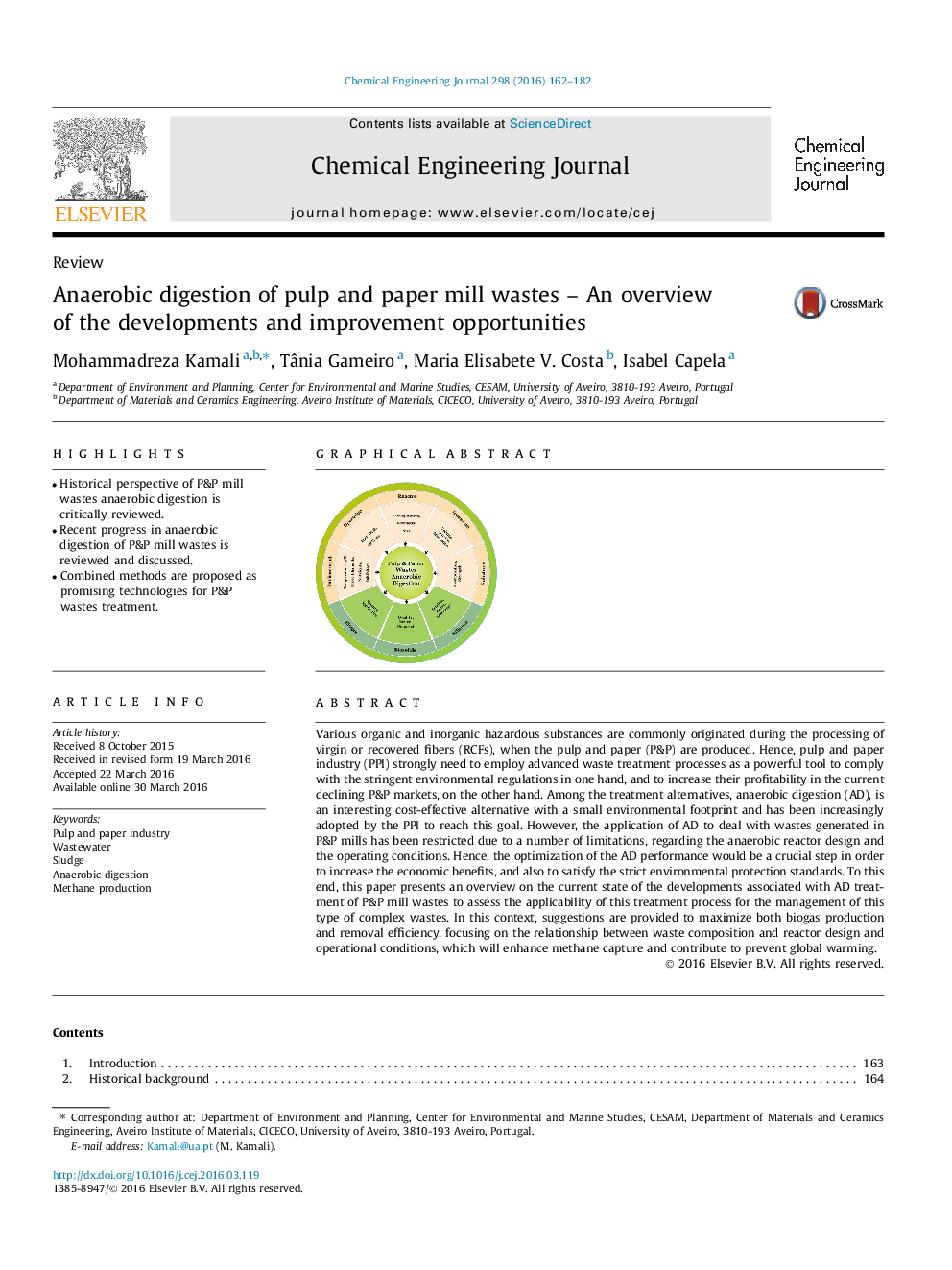| Article ID | Journal | Published Year | Pages | File Type |
|---|---|---|---|---|
| 145528 | Chemical Engineering Journal | 2016 | 21 Pages |
•Historical perspective of P&P mill wastes anaerobic digestion is critically reviewed.•Recent progress in anaerobic digestion of P&P mill wastes is reviewed and discussed.•Combined methods are proposed as promising technologies for P&P wastes treatment.
Various organic and inorganic hazardous substances are commonly originated during the processing of virgin or recovered fibers (RCFs), when the pulp and paper (P&P) are produced. Hence, pulp and paper industry (PPI) strongly need to employ advanced waste treatment processes as a powerful tool to comply with the stringent environmental regulations in one hand, and to increase their profitability in the current declining P&P markets, on the other hand. Among the treatment alternatives, anaerobic digestion (AD), is an interesting cost-effective alternative with a small environmental footprint and has been increasingly adopted by the PPI to reach this goal. However, the application of AD to deal with wastes generated in P&P mills has been restricted due to a number of limitations, regarding the anaerobic reactor design and the operating conditions. Hence, the optimization of the AD performance would be a crucial step in order to increase the economic benefits, and also to satisfy the strict environmental protection standards. To this end, this paper presents an overview on the current state of the developments associated with AD treatment of P&P mill wastes to assess the applicability of this treatment process for the management of this type of complex wastes. In this context, suggestions are provided to maximize both biogas production and removal efficiency, focusing on the relationship between waste composition and reactor design and operational conditions, which will enhance methane capture and contribute to prevent global warming.
Graphical abstractFigure optionsDownload full-size imageDownload as PowerPoint slide
